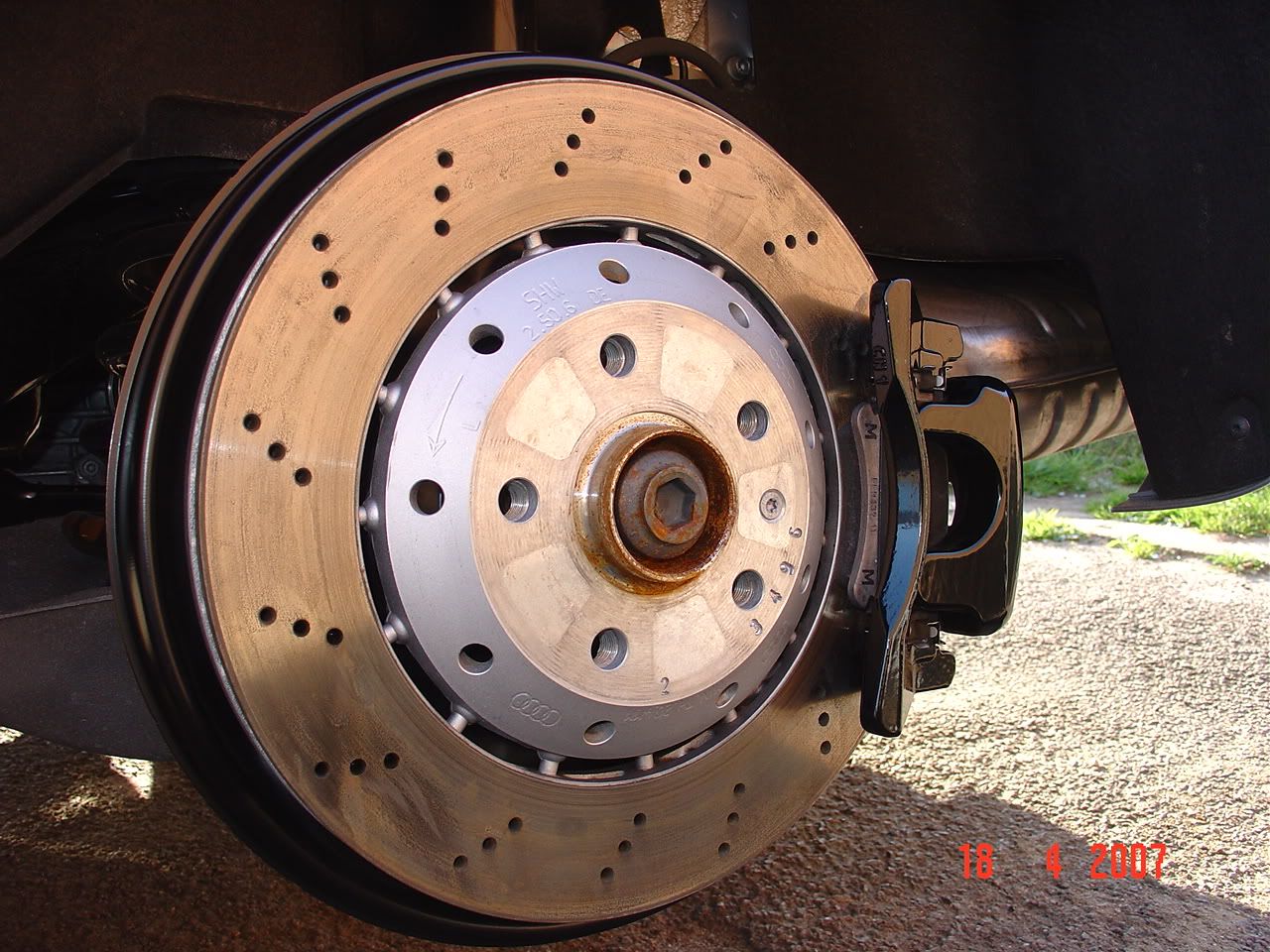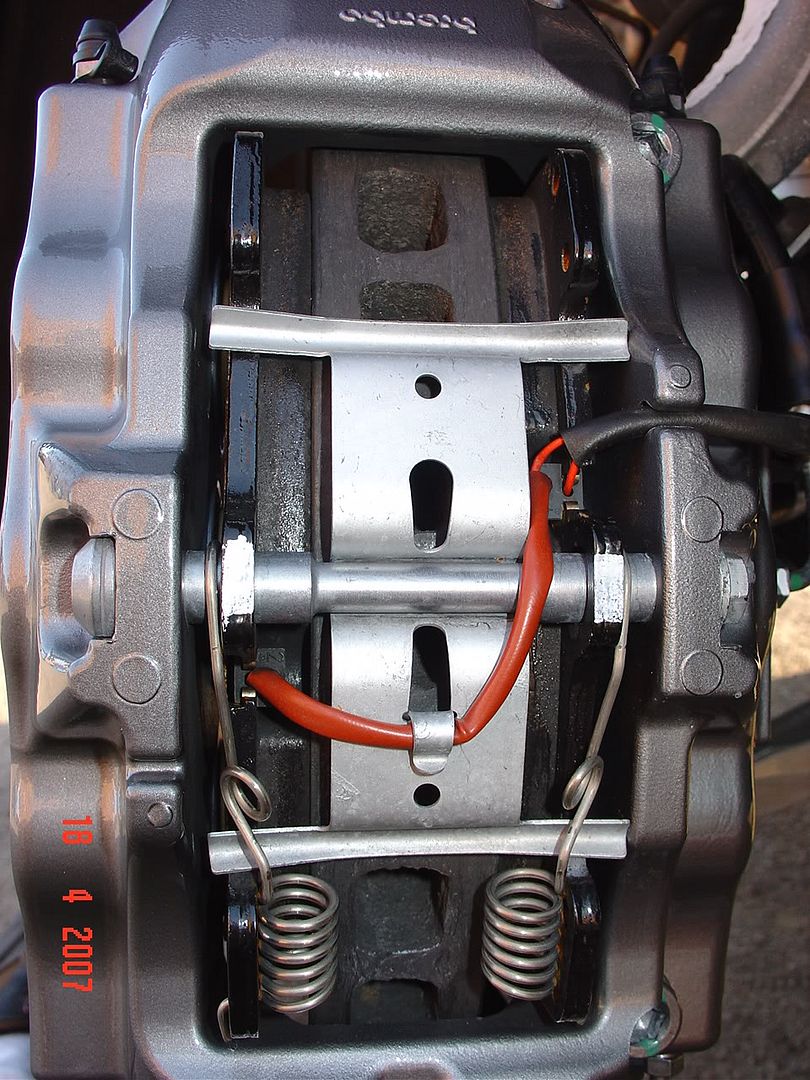I would certainly like the highline computer, but almost no used cars I've seen have them. As I've explained, cars are expensive in Ireland, and that VRT is payable on extras - so most people nearly ignore the options list and just buy a very standard car.
Highline is nice, but it isn't a 'be all and end all' option. Apart from it looking slightly better in the centre of the dash, most of its functions are just something that you would change just the once, and then forget. So the lack of a highline really shouldn't be a deal breaker.

Couple of questions on comments you've made:
That clutch pedal - should it be level with the brake pedal? 'Cause it does look higher alright. What might that be a sign of? Is it a problem?
OK, ideally, clutch and brake pedals
should be level, though in reality, they are often different - just down to the production process. However, that one does look quite a bit higher than any I've seen on a Golf5. OK, a high proportion of GTIs are sold with DSG, so manual GTIs arn't as common. But all Mk5 Golfs with a manual box have identical pedal postions - so use other manual Golfs as a comparison.
Abnormally high clutch pedal usually means the clutch itself is knackered, or very close to its end. Check the actual bite point - when starting from a standstill, and also on the move. A good test of a clutch is to be in a low gear, say 2nd or 3rd (not 1st, or you might get an ASBO

), with foot completely off the clutch, and at low road speed (low revs on the rev counter - ideally around 1,500 rpm) - then accelerate hard. If you notice the engine revs suddenly rise much quicker than the corresponding anticipated rise in road speed, then the clutch is slipping. If there is no slip from this first test, try the same test again, but this time, when accelerating,
gentally press the clutch just a little. If the revs rapidly rise, and you have only pressed the clutch pedal by say, roughly an inch - that is a sign that the clutch is on its way out.
How exactly do I check the pads and discs for wear? Is it easily done by hand and eye?
Crouch down by each wheel, and look through the holes of the alloy wheels. With the monza style of wheels you can easily get a good clear view of the pads resting in the calipers. Obviously, you can only really see the outer of the two pads, but this outer pad, along with the actual surface of the disc - should give you a good indication on the general health of the brakes.
Below is a pic of an old shape RS6, with knackered discs. You should be able to make out 'grooves' going round the disc, a bit like a ploughed field. If anyones disc ever looks like that, then shame on them!:

This is a close up of a rear brake caliper of an RS4 - where, if you look carefully, you can see a 'grey' metal backplate to the pads (with the letter M at both edges), and look even more carefully between that grey backplate and the disc, and you can just see the friction lining. If this friction lining is below say 4mm thick, then I would use that as a strong bargaining point. If they are 2mm or less, demand that both the discs and pads are changed - or demand that £400-£500 per axle is knocked off the price:

Oh, and a close up of some 'Audi ceramic' Brembo 6-pot front brakes from my RS4 - purely for educational purposes!

(OK, OK, I am a picture whore!



)

Should the exhaust be shiny chrome, or what finish should I be seeing?
Yup, bright and shiny - almost to a mirror finish.
Que pictures from polished tail pipes!

It would be great if you (Teutonic_Tamer) could look up the factory spec with the VIN. Can you tell me where I'll find it when I go to look at the car?
OK, there are three main places the VIN is permanently marked on the car. One position I'm not willing to divulge (and I don't think it is appropriate for anyone else to either), because it is used by the police for criminal investigations. However the two VIN locations designed for 'public' use on a Golf5 are:
- On a plastic plate attached to the dashboard, viewable from outside through a small letter-box aperture the windscreen, on the passenger side at the lower edge
- On the front right inner wing member - open the bonnet, and it is partially under the foam seal near the black scuttle panel edge
Obviously, these two should match (apart from any leading and trailing asterixes), and if they don't - get the police involved, and they will check with the third hidden one. Also make sure that both vehicle 'data sticker's, one located on the inside cover of the service book, and the other on the inside boot floor pan, under the boot carpet - all match as well. Just incase you are not sure, a VIN consists of 17 digits, a mix of letters and numbers, with Volkswagens usually starting something like "WVWZZZ . . ."